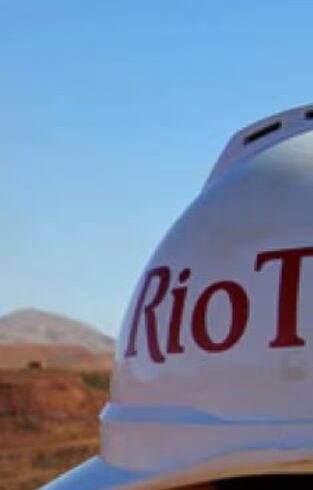
Rio Tinto has scrapped a $215 million research centre touted last year as a key staging ground for the world’s net zero transition.
The site in Rockingham, south of Perth, will be handed instead to Australian technology company Calix for a green iron pilot plant, along with a $35 million investment in its zero-emission steelmaking technology.
The pivot sends plans for BioIron, a branded product the mining giant has spent more than a decade developing, back to the drawing board.
It was hoped biomass and microwave energy would convert Pilbara iron ore into raw iron under the BioIron brand. (Supplied: Rio Tinto)
BioIron sought to harness biomass and microwave energy to convert Pilbara iron ore into raw iron, spruiked as reducing the carbon emissions of steelmaking by 95 per cent.
But Rio Tinto acknowledged on Monday its furnace designs needed “additional development” to minimise risks and optimise performance.
In a statement, Rio Tinto Iron Ore chief executive Matthew Holcz said the company was still committed to “progressing” BioIron long-term.
Could Rio Tinto’s BioIron steelmaking process change the world?
“Both projects are part of our work to reduce emissions and support the future of iron ore in Australia and the communities that depend on it,” he said.
Calix chief executive Phil Hodgson welcomed the announcement, saying it validated for the company’s technique, nicknamed “Zesty”.
“Calix is a small technology startup company trying to decarbonise iron and steel. [To have] a partner like Rio, the largest iron ore miner in the world, is very significant for us,” he said.
Technique not ‘green’ yet
The Zesty technique uses electric heating and hydrogen reduction to produce its iron, which Mr Hodgson says holds “enormous potential” to decarbonise Western Australia’s dominant industry.
“Rather than big blast furnaces producing over 1.8 tonnes of carbon dioxide per tonne of iron produced, we can produce iron with zero carbon,” he said.
The project has already received almost $45 million in grant funding from the Australian Renewable Energy Agency (ARENA).
Phil Hodgson says the Zesty technique can produce iron with zero carbon. (Supplied: Calix)
In basic terms, the method involves heating a large steel tube with dust-like iron ore at its centre.
Hydrogen is then introduced, causing a chemical reaction that sends iron out one end and water vapour out the other.
However, much of the iron produced by Calix will not be “green” during testing, drawing electricity from the main power grid.
“Not every tonne of steel iron that we produce in Kwinana out of this demonstration plant would necessarily be zero emissions, per se,” Mr Hodgson said.
“The idea is to demonstrate the technology at this scale so that the full-scale commercial units can be [zero emissions].”
Eyeing the Pilbara
Curtin University associate professor in minerals, energy, and chemical engineering Tejas Bhatelia said Rio Tinto’s shift in investment reflected the two technologies’ level of readiness.
“They’re not competing technologies,” he said.
“They are complementing, and they may be into the mixture of things that Rio or others will do.”
Dr Tejas Bhatelia says the BioIron product likely encountered unexpected difficulties. (Supplied: Curtin University)
Dr Bhatelia said BioIron may have proven more difficult to scale up than first anticipated.
Unlike the burning of raw biomass like barley, wheat, or straw, a hydrogen-based fuel source left no carbon to sequester.
The logistics of sourcing that biomass could also have been an obstacle.
“If you are out somewhere where you can’t source the biomass then you are spending a lot of energy bringing that biomass to the steel processing plant,” Dr Bhatelia said.
Under the terms of the deal, Rio Tinto will supply up to 10,000 tonnes of iron ore to Calix for the proposed demonstration plant, subject to various conditions.
It is hoped the facility will be capable of producing 30,000 tonnes of iron per year, its proof-of-concept paving the way for further green steelmaking facilities to be built closer to the company’s Pilbara mines.
It is hoped the Rockingham facility will be capable of producing 30,000 tonnes of iron per year. (ABC News: Michelle Stanley)
“[The Pilbara has] got excellent sun and excellent wind resources, and it’s a combination of both of those two … that’s a really interesting opportunity for something like a green iron industry in this country,” Mr Hodgson said.
But Dr Bhatelia warned that more infrastructure would be needed in the region to support renewables and water supply, as well as the upskilling of local workers.
The project now enters a detailed engineering phase ahead of a final investment decision by Rio Tinto in 2026.
Loading
Source





